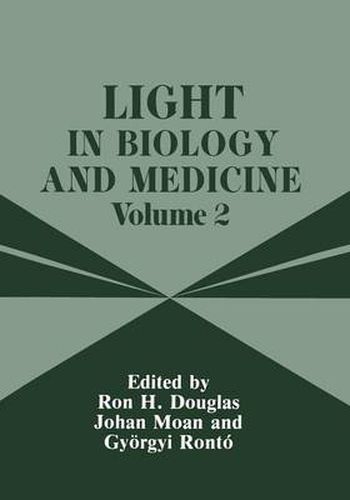Readings Newsletter
Become a Readings Member to make your shopping experience even easier.
Sign in or sign up for free!
You’re not far away from qualifying for FREE standard shipping within Australia
You’ve qualified for FREE standard shipping within Australia
The cart is loading…






This title is printed to order. This book may have been self-published. If so, we cannot guarantee the quality of the content. In the main most books will have gone through the editing process however some may not. We therefore suggest that you be aware of this before ordering this book. If in doubt check either the author or publisher’s details as we are unable to accept any returns unless they are faulty. Please contact us if you have any questions.
This is the third book chronicling the scientific activities of the European Society for Photobiology (ESP). It contains 56 chapters, written by authors from 16 countries, based on presentations at the 3rd Congress of the European Society for Photobiology held in Budapest, Hungary on the 27th August - 2nd September 1989. The science of photobiology, which can simply be defined as the study of the effects of light on living matter, covers so many subject areas that no single book can hope to do justice to them all. This multidisciplinary nature of photobiology is reflected by the material covered in this volume, which contains chapters on such diverse themes as motile photoresponses in bacteria, cancer therapy and photosynthesis. Interestingly, the emphasis placed on various subject areas differs quite markedly from the preceding volume (‘Light in Biology & Medicine, volume 1, eds. R. Douglas, J. Moan & F. Dall'Acqua, Plenum Press, 1988). It is hoped that by highlighting different areas of photobiology these and future pUblications emanating from the ESP will, in time, produce a comprehensive record of photobiological research,. not only in Europe but throughout the world. Unlike many conference proceedings all the chapters con tained within this book have been subjected to rigorous peer review and several potential contributions were rejected during the editing process. Furthermore, most manuscripts underwent extensive editing to try and produce chapters of a uniform format and standard.
$9.00 standard shipping within Australia
FREE standard shipping within Australia for orders over $100.00
Express & International shipping calculated at checkout
This title is printed to order. This book may have been self-published. If so, we cannot guarantee the quality of the content. In the main most books will have gone through the editing process however some may not. We therefore suggest that you be aware of this before ordering this book. If in doubt check either the author or publisher’s details as we are unable to accept any returns unless they are faulty. Please contact us if you have any questions.
This is the third book chronicling the scientific activities of the European Society for Photobiology (ESP). It contains 56 chapters, written by authors from 16 countries, based on presentations at the 3rd Congress of the European Society for Photobiology held in Budapest, Hungary on the 27th August - 2nd September 1989. The science of photobiology, which can simply be defined as the study of the effects of light on living matter, covers so many subject areas that no single book can hope to do justice to them all. This multidisciplinary nature of photobiology is reflected by the material covered in this volume, which contains chapters on such diverse themes as motile photoresponses in bacteria, cancer therapy and photosynthesis. Interestingly, the emphasis placed on various subject areas differs quite markedly from the preceding volume (‘Light in Biology & Medicine, volume 1, eds. R. Douglas, J. Moan & F. Dall'Acqua, Plenum Press, 1988). It is hoped that by highlighting different areas of photobiology these and future pUblications emanating from the ESP will, in time, produce a comprehensive record of photobiological research,. not only in Europe but throughout the world. Unlike many conference proceedings all the chapters con tained within this book have been subjected to rigorous peer review and several potential contributions were rejected during the editing process. Furthermore, most manuscripts underwent extensive editing to try and produce chapters of a uniform format and standard.